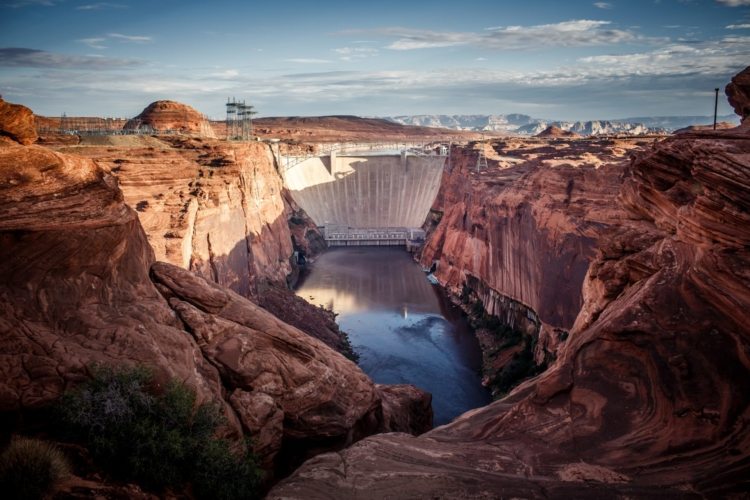5.2 million people are currently being affected by the 20-year drought in Arizona, according to the National Integrated Drought Information System. To help combat this and to ensure that Arizonans have access to water during the current drought, ASU’s Morrison Institute for Public Policy established the Kyl Center for Water Policy in 2014.
The Kyl Center “promotes research, analysis, collaboration and dialogue to build consensus on sound water stewardship for Arizona and the West,” according to its website.
The Kyl Center’s next project is a data visualization tool called the Arizona Colorado River Visualization Enterprise, also known as the Arizona CuRVE Project. The Arizona CuRVE Project is the result of a partnership between The Kyl Center and ASU’s Decision Theater.
READ ALSO: As the drought persists, here’s how Phoenix is prepared
The CuRVE Project will conceptualize and lay out potential futures for different communities throughout Arizona, in the wake of the Colorado River Shortage.
“Climate change is predicted to cause substantial reductions in the Colorado’s flow — of 25% or more — in the decades to come,” according to the Kyl Center Website.
In August 2021, the U.S. Secretary of the Interior declared the first shortage on the Colorado River, making considerable cuts to Arizona’s water supply.
“The Colorado River is over-allocated, and looking forward, we cannot rely on years of large snowpack in the mountains to re-fill reservoirs because the entire Southwest is becoming more arid. This means the only viable long-term solution is that we must collectively use significantly less water from the Colorado River. Cities cannot solve this problem alone because 75-80% of Colorado River water is used for agriculture,” said Kathryn Sorensen, Director of Research for the Morrison Institute for Public Policy.
The shortage was declared because of a 2021 forecast that predicted Lake Mead’s water level to be 1,066 feet above sea level by the end of 2021. The forecast was correct.
The declared shortage is a Tier 1 shortage, which mainly impacts Central Arizona farmers. If the shortage continues, more of Central Arizona will be affected.
“My parents’ water bill keeps rising. It’s really become something for us to be aware of,” said Dom Picard, a Phoenix resident.
Because of the shortage, “[in the next few years], the cost of water delivered through the Central Arizona Project will increase and if you live in Central Arizona your water bill may rise,” according to the Kyl Center website.
The Drought Contingency Plan (DCP) is the management system used for the Colorado River by the federal government. The Kyl Center’s research will help foster future DCP negotiations.
“In our polling, we’ve found that Arizonans are worried about water. Water security, especially, is a top concern,” said Sarah Porter, Director of the Kyl Center.
To keep Arizonans aware of the status of the Colorado Water Shortage, one of the Kyl Center’s ongoing projects is called the Arizona Water Blueprint. The Arizona Water Blueprint is an interactive 58-layer map that details several aspects of Arizona’s water infrastructure.
The Blueprint is regularly updated using an API that connects the Blueprint to the work of contributing Arizona agencies.




